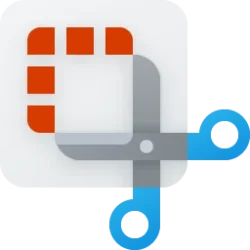Thankyou. I keep my important personal files in a Veracrypt container which I am currently uploading to the Cloud - just in case !
Update: It is taking forever !
You don't necessarily
have to use the cloud, as there exist other ways to store a copy off-site.
The copy that you have at your son's meets the definition of 'off-site' equally fine, and, even if you
want to use the cloud, you don't necessarily have to use it in such a way that
all your important data will be uploaded to it
all of the time.
There are things that you can do to improve the time it takes to finish the upload tasks. Or consider to do.
For example, maybe not all of your data is so hugely important to you that you want to have an additional copy of it in the cloud. Not all my data has the same level of 'critical-ness' so, to some minor extent, I tend to use multiple different variations of the same backup rule. I definitely don't back up the whole shebang on a daily schedule, that's for sure. Also, periodical backups don't necessarily have to be on a fixed schedule. I only make backups whenever I feel like I need to.
Further, there are pros and there are cons to incremental/differential backup strategies, but one of the pros is that they can help to reduce the amount of data to be copied over slow data connections. Be it over a slow internet connection or onto a slow HDD or onto a slow HDD over a slow internet connection. For reasons that should be completely obvious, hooking a fast SSD up to a remote computer over a slow internet doesn't make the fast-ish SSD run any faster than what the slow internet is capable to keep up with.
Although it certainly depends, another good idea could be to set up your own private cloud as opposed to choosing to use a public cloud service. You could decide to set up a private cloud at your son's, and, at the same time also, maybe he could set up another private cloud at your place. A private cloud doesn't necessarily have to be on a NAS. A decent router these days has at least a USB 3.0 port on it that offers a fast enough transfer speed to keep up with typical internet upload speeds, and fast enough to be used as a cheaper alternative to an affordable NAS.
That being said, an expensive NAS is almost always going to better unless maybe if it is a very heavily overpriced NAS. However, even if it isn't in any way overpriced, yet still rather expensive, it might be overkill for what exactly it is that you need. Either way, for reasons that should again be completely obvious, using a fast NAS over a slow internet will still be slow. A lot also depends on what your expectations are.
Besides this, there are a few other caveats to also want to keep in mind if choosing to take the NAS route for backups. TechTarget website has a series of great articles that explain in good detail (and without getting overly technical) what I am referring to here; these articles are free, albeit you need to sign up with an email account to get access to these articles.
I don't have a NAS because it's overkill for what I need, expensive if it has to be a decent one, and the Asus RT-AX92U 2-Pack that I have still ticks all my boxes at least for now (and for the price I paid, I can't buy a decent empty NAS that could maybe satisfy my needs after it's been equipped with a few storage devices).
The first thing I would do in your case is keep
two copies at your son's instead of only one, and, in addition, I would remember to always keep at least one of these two copies in the (air gapped) safe spot so if one drive leaves the safe spot, the other drive does not. You can still alternate between them of course.
Just never move both drives out of of the air gapped safe spot at once. An air gapped safe spot = the drive(s) stored in there must be physically disconnected from the wall outlet and must also be physically disconnected from all electronics devices, away from the computer and away from electric/electronic circuits. That is, excepting only maybe if they are ones that are physically disconnected from the power grid and can be regarded as 'fairly safe', and that don't hold any electric charge nor are physically connected to something that doesnt meet these same criteria [that would otherwise enable them to be regarded as 'fairly safe'].






